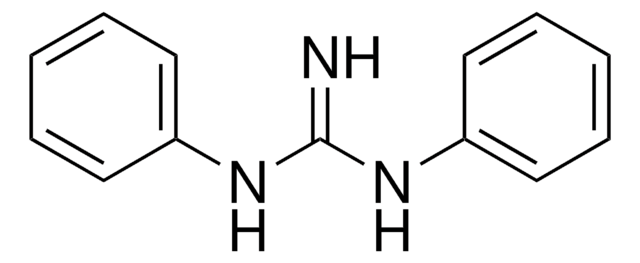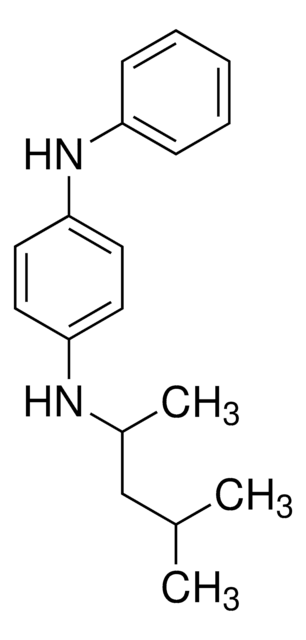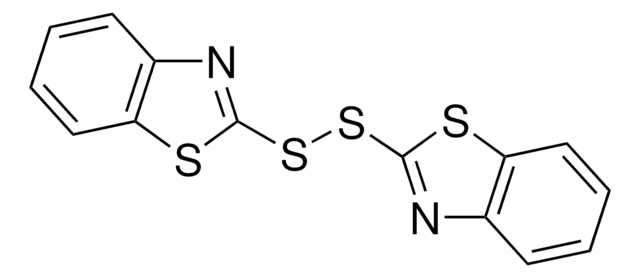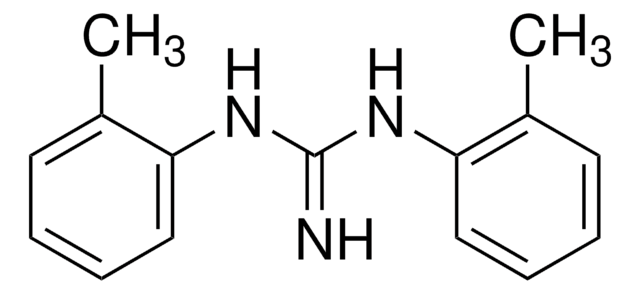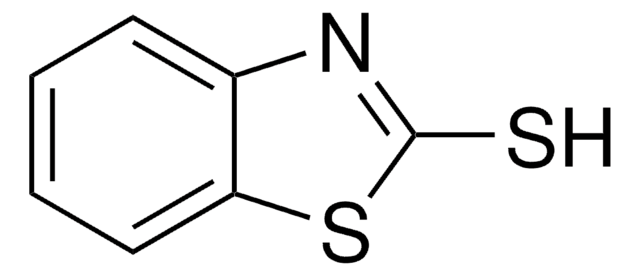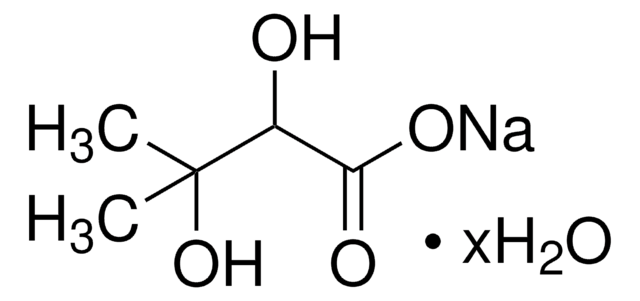43029
1,3-Diphenylguanidine
analytical standard (for titrimetry)
About This Item
Prodotti consigliati
Grado
analytical standard (for titrimetry)
Livello qualitativo
Saggio
≥99.5% (HPLC)
tecniche
titration: suitable
Punto di fusione
146-148 °C (lit.)
149-150 °C
applicazioni
cleaning products
cosmetics
food and beverages
personal care
Formato
neat
Stringa SMILE
N=C(Nc1ccccc1)Nc2ccccc2
InChI
1S/C13H13N3/c14-13(15-11-7-3-1-4-8-11)16-12-9-5-2-6-10-12/h1-10H,(H3,14,15,16)
OWRCNXZUPFZXOS-UHFFFAOYSA-N
Cerchi prodotti simili? Visita Guida al confronto tra prodotti
Descrizione generale
Applicazioni
Caratteristiche e vantaggi
- Available as a solid in a secure glass bottle to ensure its stability for the entire shelf life until opened.
- High-quality offering accurate titer determinations
- Accompanied by a certificate of analysis (CoA)
Avvertenze
Danger
Indicazioni di pericolo
Consigli di prudenza
Classi di pericolo
Acute Tox. 3 Oral - Aquatic Chronic 2 - Eye Irrit. 2 - Repr. 2 - Skin Irrit. 2 - STOT SE 3
Organi bersaglio
Respiratory system
Codice della classe di stoccaggio
6.1C - Combustible acute toxic Cat.3 / toxic compounds or compounds which causing chronic effects
Classe di pericolosità dell'acqua (WGK)
WGK 3
Punto d’infiammabilità (°F)
338.0 °F - closed cup
Punto d’infiammabilità (°C)
170 °C - closed cup
Dispositivi di protezione individuale
Eyeshields, Faceshields, Gloves, type P3 (EN 143) respirator cartridges
Scegli una delle versioni più recenti:
Certificati d'analisi (COA)
Non trovi la versione di tuo interesse?
Se hai bisogno di una versione specifica, puoi cercare il certificato tramite il numero di lotto.
Possiedi già questo prodotto?
I documenti relativi ai prodotti acquistati recentemente sono disponibili nell’Archivio dei documenti.
Il team dei nostri ricercatori vanta grande esperienza in tutte le aree della ricerca quali Life Science, scienza dei materiali, sintesi chimica, cromatografia, discipline analitiche, ecc..
Contatta l'Assistenza Tecnica.